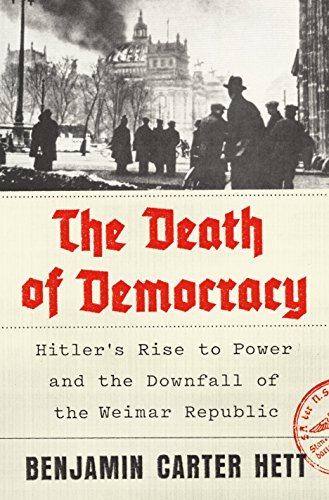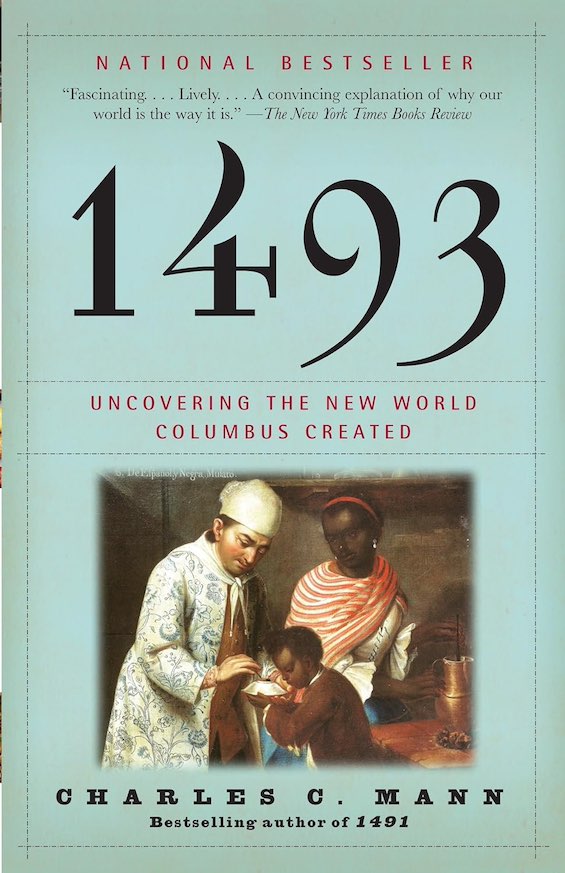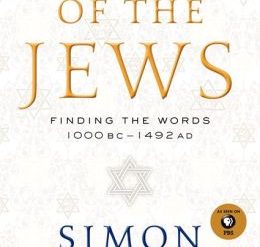
How democracy died in Germany is the subject of a penetrating new historical study of the Weimar Republic and the political turmoil that wracked the nation in the early years of the Great Depression. Hunter College history professor Benjamin Carter Hett brings new evidence to light that exposes old myths and reassesses the roles of the politicians and military officers who were prominent in German politics in the 1920s and early 1930s.
Estimated reading time: 4 minutes
As Hett notes, “the end of the Cold War brought major advances in what we know about the Nazi era.” The picture he paints on the basis of recently opened East German and Soviet archives is far more nuanced than many American readers might have imagined. And it becomes clear that any analogy to contemporary US politics looks facile. Democracy may well be dying in the United States today. But its death throes are not taking anything like the course they took in Weimar Germany.
Hett groups the many political parties in the Weimar Republic into three “confessionals” (taking a term from religion to connote shared values and beliefs):
- the socialist camp (Social Democrats, Communists);
- the Catholic camp (Center Party, Bavarian People’s Party); and
- the Protestant middle-class camp (German Nationals, German Democratic Party, German People’s Party, Nazis).
The Death of Democracy: Hitler’s Rise to Power and the Downfall of the Weimar Republic by Benjamin Carter Hett (2018) 304 pages ★★★★☆
Before 1933, political stability despite the political turmoil
“The crucial point” here, Hett explains, “is that for all the top-level political instability in the Weimar Republic—thirteen chancellors and twenty-one different administrations in just over fourteen years—these camps remained stable from 1919 to 1933.” Individual parties saw dramatic ups and downs in popular support over this period, but it was only after 1933 that the Nazis broke out of the Protestant middle-class camp and captured more than one-third of the vote.
Hett’s carefully researched account yields other surprises. For example:
- As is well known, Germany’s financial relationship with its neighbors and the United States was the key to its position in Europe. Hett notes that “financial arrangements in interwar Europe were really about security and, in particular, keeping Germany in line. So long as Germany was constrained by reparations and the gold standard, it could not threaten its neighbors.” But when the Depression forced England and then other countries off the gold standard, and the leaders of the Weimar Republic had already successfully negotiated dramatic reductions and postponements in reparations, the country was free to reassert itself once Hitler came to power in 1933.
- “A persistent myth has it that the Treaty of Versailles was excessively harsh, and that its harshness explains the rage that gave rise to the Nazis. Actually, the treaty was the mildest of the post-First World War settlements . . . Certainly, almost all Germans perceived the treaty to be unjust, which didn’t necessarily make it so.”
Conditions dissimilar to those in America today
There is abundant evidence in The Death of Democracy that conditions in Weimar Germany were not substantially similar to those in the United States today. The world was in a deep depression, with millions out of work and many on the verge of starvation. Germany’s parliamentary system guaranteed a level of instability that lent itself to the possibility of a coup such as Adolf Hitler’s in 1933. Above all, the level of violence in German society hovered just below that of civil war. In the country’s cities, pitched battles between Nazi Stormtroopers and Communist activists were common. And the Nazis’ deep-seated anti-Semitism manifested in violent outbursts that preceded Hitler’s accession to the chancellor’s office.
Sadly, however, there is one fundamental way that today’s Right-Wing Republicans mirror the Nazis: a total lack of respect for truth. In the Guardian (July 14, 2018), Michiko Kakutani quotes Hannah Arendt in drawing this analogy: “The ideal subject of totalitarian rule is not the convinced Nazi or the convinced communist, but people for whom the distinction between fact and fiction (ie the reality of experience) and the distinction between true and false (ie the standards of thought) no longer exist.” Kakutani notes that Donald Trump “made 2,140 false or misleading claims during his first year in office–an average of 5.9 a day.” The behavior of many other leading Republicans is hardly much better, if only because they steadfastly refuse to counter or even acknowledge this unceasing barrage of lies. This is, indeed, how democracy dies.
Benjamin Carter is also the author of a previous, closely related book, Burning the Reichstag: An Investigation into the Third Reich’s Enduring Mystery.
For related reading
You’ll find other insightful books about related subjects on my post, Top 10 nonfiction books about politics. I particularly recommend Trumpocracy: The Corruption of the American Republic, by David Frum, and Two government professors ask, is American democracy dying?, reviewing How Democracies Die by Steven Levitsky and Daniel Ziblatt.
You may enjoy browsing through 20 top nonfiction books about history.
And you can always find my most popular reviews, and the most recent ones, on the Home Page.



























